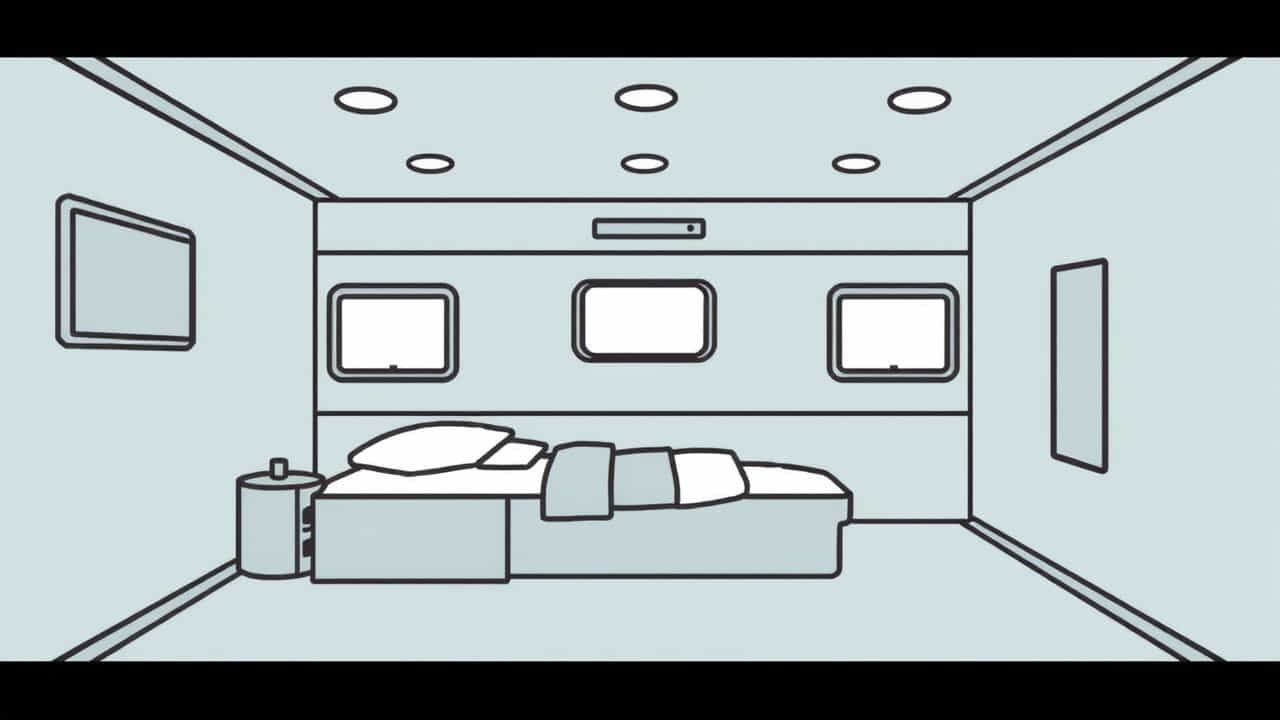An aft cabin is a term commonly used in boating and aviation to describe a living or seating area located at the rear (aft) of a vessel or aircraft. This space can serve different purposes depending on the type of vehicle, ranging from luxurious sleeping quarters on yachts to functional crew or passenger areas on airplanes.
This topic will explore the meaning, benefits, and uses of an aft cabin, covering both marine and aviation applications.
Understanding the Aft Cabin in Boating
Definition of an Aft Cabin on Boats
In the world of boating, an aft cabin refers to a living or sleeping area located at the rear section of a boat, yacht, or ship. This space is typically found in larger vessels, such as motor yachts and sailing boats, where it provides a comfortable and private sleeping area for the owner or guests.
Key Features of an Aft Cabin on a Boat
-
Spacious Interior – Aft cabins often have more room than forward cabins, making them ideal for master bedrooms.
-
Scenic Views – Located at the back of the boat, these cabins provide panoramic water views.
-
Quiet and Private – Since they are positioned away from the engine room and high-traffic areas, aft cabins offer a more peaceful environment.
-
Enhanced Stability – The rear section of a boat tends to move less compared to the bow (front), ensuring less motion and more comfort.
Types of Boats with Aft Cabins
-
Motor Yachts – Luxury yachts often feature a large aft cabin with ensuite bathrooms.
-
Sailing Boats – Many modern sailboats incorporate an aft cabin for extra sleeping space.
-
Houseboats – Some houseboats include an aft cabin as a primary living space.
Advantages of an Aft Cabin on a Boat
-
Better Comfort for Long Voyages – Ideal for extended trips where passengers need a dedicated rest area.
-
Increased Resale Value – Boats with well-designed aft cabins tend to have higher market demand.
-
Versatile Usage – Can be used as a guest room, storage area, or even an office space.
The Aft Cabin in Aviation
What Is an Aft Cabin on an Aircraft?
In aviation, the aft cabin refers to the passenger or crew area located in the rear section of an aircraft. This space is typically found in commercial airliners, private jets, and cargo planes.
Functions of an Aft Cabin in an Airplane
-
Passenger Seating Area – On commercial flights, the aft cabin houses the last few rows of seats.
-
Crew Rest Area – Some long-haul aircraft have a dedicated rest zone for pilots and flight attendants in the aft section.
-
Cargo and Storage – In smaller planes, the aft cabin might be used for luggage storage or additional cargo capacity.
-
Emergency Exit Zone – Some planes place emergency exits in the aft cabin for safety and accessibility.
Advantages of an Aft Cabin in Aviation
-
Less Foot Traffic – Passengers seated in the aft cabin experience less movement from other travelers.
-
Proximity to Restrooms – Many airplanes place lavatories near the rear, making it convenient for passengers.
-
Better Chances for Empty Seats – On less crowded flights, the aft cabin is often the least occupied section, offering more space.
Disadvantages of an Aft Cabin on an Airplane
-
More Engine Noise – The rear of the aircraft is closer to the engines, which can make it slightly noisier.
-
Last to Exit – Since boarding and deplaning usually start from the front, aft cabin passengers disembark later.
-
More Turbulence – The back of the plane experiences stronger movement during turbulence compared to the middle or front.
Aft Cabin vs. Forward Cabin: Key Differences
| Feature | Aft Cabin (Rear) | Forward Cabin (Front) |
|---|---|---|
| Location | Rear of the vessel/aircraft | Front of the vessel/aircraft |
| Space | Often larger on boats, smaller on planes | Typically more compact |
| Privacy | More private due to fewer people | More foot traffic |
| Comfort | More stable on boats, more turbulence in planes | Less movement in planes |
| Views | Scenic rear-facing views on boats | Forward-facing views |
Is an Aft Cabin Right for You?
For Boaters:
If you own or plan to buy a boat, an aft cabin is a great choice if you want more living space, comfort, and privacy. However, it might not be necessary for smaller boats or day cruisers.
For Frequent Flyers:
If you fly often, choosing an aft cabin seat can be beneficial if you prefer quiet areas with fewer passengers. However, be prepared for longer wait times during boarding and deplaning.
An aft cabin is a valuable space in both boats and airplanes, offering comfort, privacy, and functionality. Whether you’re a boater looking for extra luxury or a traveler choosing a seat, understanding the benefits and drawbacks of the aft cabin will help you make an informed decision.
